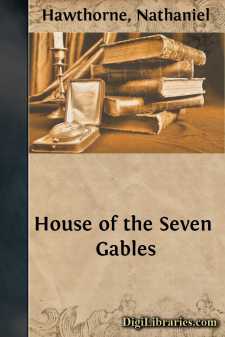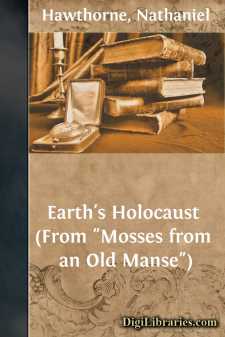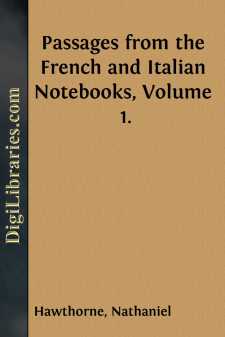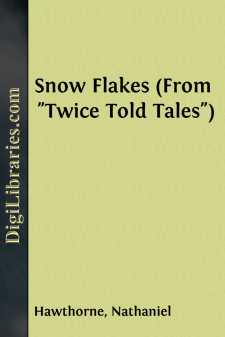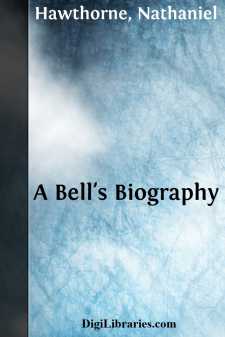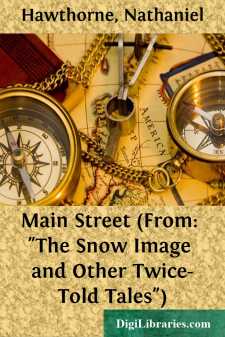Categories
- Antiques & Collectibles 13
- Architecture 36
- Art 48
- Bibles 22
- Biography & Autobiography 813
- Body, Mind & Spirit 141
- Business & Economics 28
- Children's Books 12
- Children's Fiction 9
- Computers 4
- Cooking 94
- Crafts & Hobbies 4
- Drama 346
- Education 46
- Family & Relationships 57
- Fiction 11826
- Games 19
- Gardening 17
- Health & Fitness 34
- History 1377
- House & Home 1
- Humor 147
- Juvenile Fiction 1873
- Juvenile Nonfiction 202
- Language Arts & Disciplines 88
- Law 16
- Literary Collections 686
- Literary Criticism 179
- Mathematics 13
- Medical 41
- Music 40
- Nature 179
- Non-Classifiable 1768
- Performing Arts 7
- Periodicals 1453
- Philosophy 64
- Photography 2
- Poetry 896
- Political Science 203
- Psychology 42
- Reference 154
- Religion 513
- Science 126
- Self-Help 83
- Social Science 81
- Sports & Recreation 34
- Study Aids 3
- Technology & Engineering 59
- Transportation 23
- Travel 463
- True Crime 29
House of the Seven Gables
Description:
Excerpt
THE HOUSE OF THE SEVEN GABLES.
IN September of the year during the February of which Hawthorne had completed "The Scarlet Letter," he began "The House of the Seven Gables." Meanwhile, he had removed from Salem to Lenox, in Berkshire County, Massachusetts, where he occupied with his family a small red wooden house, still standing at the date of this edition, near the Stockbridge Bowl.
"I sha'n't have the new story ready by November," he explained to his publisher, on the 1st of October, "for I am never good for anything in the literary way till after the first autumnal frost, which has somewhat such an effect on my imagination that it does on the foliage here about me-multiplying and brightening its hues." But by vigorous application he was able to complete the new work about the middle of the January following.
Since research has disclosed the manner in which the romance is interwoven with incidents from the history of the Hawthorne family, "The House of the Seven Gables" has acquired an interest apart from that by which it first appealed to the public. John Hathorne (as the name was then spelled), the great-grandfather of Nathaniel Hawthorne, was a magistrate at Salem in the latter part of the seventeenth century, and officiated at the famous trials for witchcraft held there. It is of record that he used peculiar severity towards a certain woman who was among the accused; and the husband of this woman prophesied that God would take revenge upon his wife's persecutors. This circumstance doubtless furnished a hint for that piece of tradition in the book which represents a Pyncheon of a former generation as having persecuted one Maule, who declared that God would give his enemy "blood to drink." It became a conviction with the Hawthorne family that a curse had been pronounced upon its members, which continued in force in the time of the romancer; a conviction perhaps derived from the recorded prophecy of the injured woman's husband, just mentioned; and, here again, we have a correspondence with Maule's malediction in the story. Furthermore, there occurs in the "American Note-Books" (August 27, 1837), a reminiscence of the author's family, to the following effect. Philip English, a character well-known in early Salem annals, was among those who suffered from John Hathorne's magisterial harshness, and he maintained in consequence a lasting feud with the old Puritan official. But at his death English left daughters, one of whom is said to have married the son of Justice John Hathorne, whom English had declared he would never forgive. It is scarcely necessary to point out how clearly this foreshadows the final union of those hereditary foes, the Pyncheons and Maules, through the marriage of Phoebe and Holgrave. The romance, however, describes the Maules as possessing some of the traits known to have been characteristic of the Hawthornes: for example, "so long as any of the race were to be found, they had been marked out from other men—not strikingly, nor as with a sharp line, but with an effect that was felt rather than spoken of—by an hereditary characteristic of reserve." Thus, while the general suggestion of the Hawthorne line and its fortunes was followed in the romance, the Pyncheons taking the place of the author's family, certain distinguishing marks of the Hawthornes were assigned to the imaginary Maule posterity....


